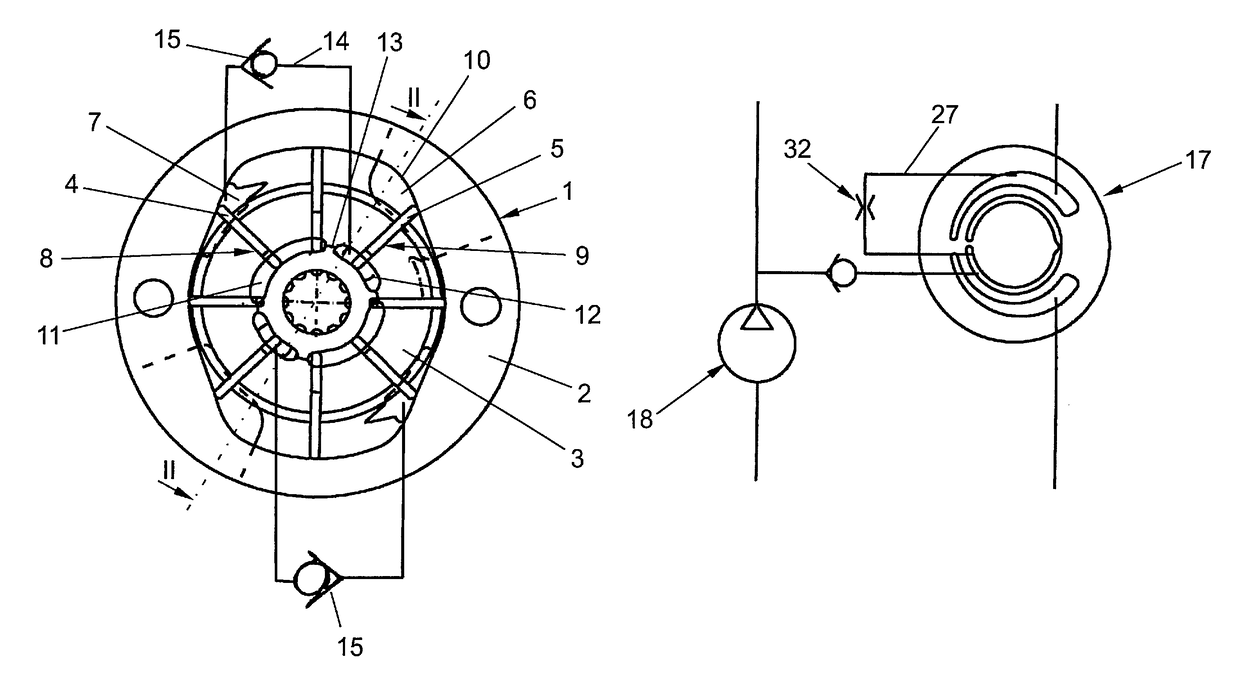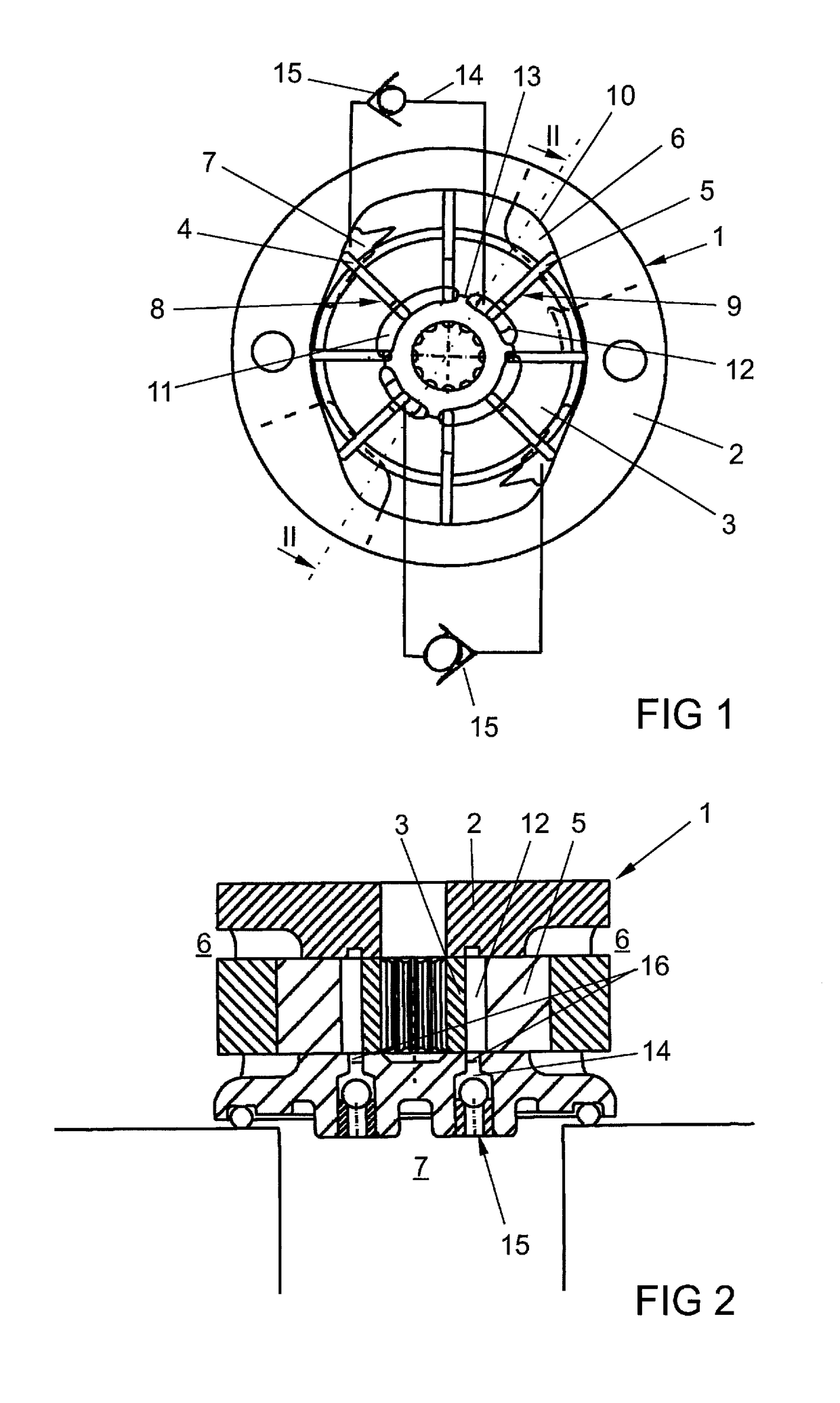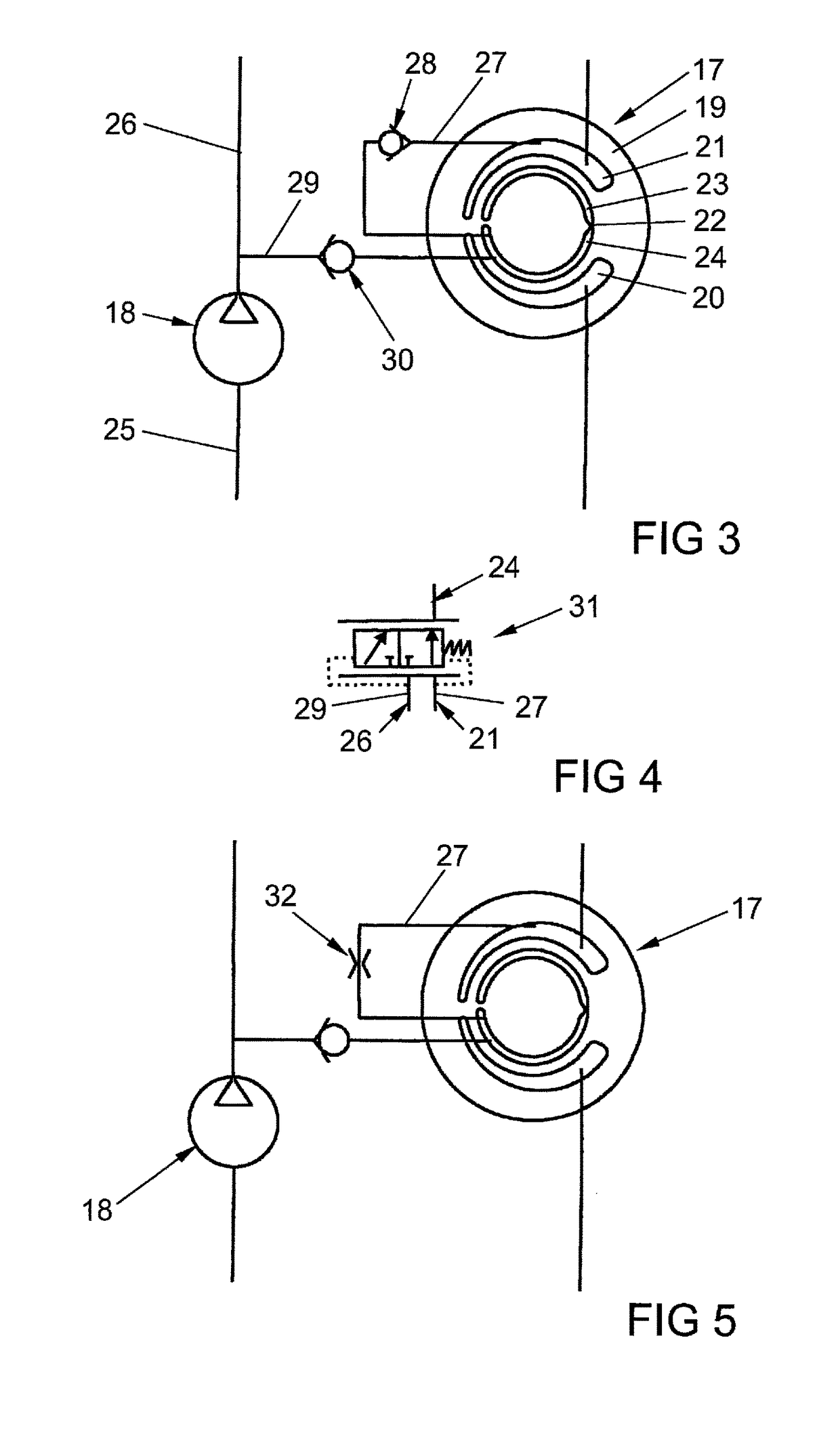Pump device for delivering a medium
a technology of a pump device and a medium, which is applied in the direction of pump control, rotary/oscillating piston combination, liquid fuel engine, etc., to achieve the effect of slowing down the transfer of the medium
- Summary
- Abstract
- Description
- Claims
- Application Information
AI Technical Summary
Benefits of technology
Problems solved by technology
Method used
Image
Examples
Embodiment Construction
[0023]FIG. 1 shows a pump device having a double-lift vane-type pump 1. The vane-type pump 1 has a rotor 3, which can rotate in a stator 2, and extendable vanes 4, 5. The vane-type pump 1 delivers a medium, e.g. transmission oil, from suction regions 6 to pressure regions 7. The vanes 4, 5 are guided in a radially movable manner in vane slots 8, 9, against a cam contour 10 of the stator 2. The rotor 3 has under-vane regions 11, 12, which are partially connected to one another by constrictions 13. The pressure regions 7 are connected, via fluid ducts 14 with check valves 15 arranged therein, to under-vane regions 12 arranged in the suction region 6. The check valves 15 are aligned in such a way that they shut off in the direction of the pressure region 7. When the rotor 3 rotates counterclockwise, the vanes 4 situated in the pressure region 7 are pressed into the rotor 3, while vanes 5 situated in the suction region 6 are extended. The vanes 4 pressed into the rotor 3 build up a pres...
PUM
 Login to View More
Login to View More Abstract
Description
Claims
Application Information
 Login to View More
Login to View More - R&D
- Intellectual Property
- Life Sciences
- Materials
- Tech Scout
- Unparalleled Data Quality
- Higher Quality Content
- 60% Fewer Hallucinations
Browse by: Latest US Patents, China's latest patents, Technical Efficacy Thesaurus, Application Domain, Technology Topic, Popular Technical Reports.
© 2025 PatSnap. All rights reserved.Legal|Privacy policy|Modern Slavery Act Transparency Statement|Sitemap|About US| Contact US: help@patsnap.com



